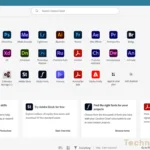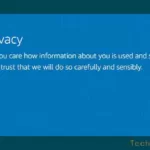In the digital era, technology is playing a significant role in our lives and it has become more important than ever to ensure the security of data and devices. Online security threats such as malware can put your data at stake and you can lose access to your important files forever.
Malware intrusion can affect your device in many different ways, like running slow, and the consequences could be a system crash, data breach, or unauthorized access to sensitive data. Keeping your devices safe should be your primary objective, whether or not you are active online.
In this article, we will explore effective strategies and techniques to solve malware-related problems on smartphones and computers. Let’s first understand what malware is and what they do to the device.
What is Malware?
Malware or malicious program is software that is harmful to the device, server, or network. These programs cause damage to your computer, phone, or tablet depending on the type of malware and how harmful the program is.
Different types of malware include Spyware, Ransomware, and Trojan’s. These programs can steal, delete, or encrypt sensitive information from the computer. Additionally, depending on the type, these programs can alter or hijack key functions of the device.
To prevent malware attacks, you should change Mac passwords and PC passwords frequently. Make sure to use strong passwords that are hard to compromise (break/crack).
What Does Malware Do?
Since malware programs are developed to harm your computer, phone, or other digital devices, they intend to make data inaccessible. You can lose access to the data stored inside the file. Depending on the type of malware, the damage can vary from inaccessible data to permanent deletion of files from the device. Trojan’s are known to bring minimal damage while Ransomware can be quite problematic.
Hackers use a variety of physical and virtual sources to spread malicious programs to infect the device and the network. These programs are downloaded automatically on computers with or without the approval of the user and without the owner even realizing it. Several sophisticated malware programs use command-and-control servers that trigger the program to interact with the target system, retrieve sensitive data, and even control the system or the server remotely.
Adware tracks your browser and download history with the aim to display advertisements that lure users to buy a product or click the link. In addition, keyloggers or system monitors can track everything you do on your computer to capture sensitive information, like passwords.
7 Solutions to Prevent Malware Attacks
Let’s now move on to understand the solutions to remove malware and minimize the harm that these programs can cause to the device.
Install a Reliable Antivirus Tool
Equip your device with a powerful antivirus application to combat malware. Select an application that gives you real-time scanning, automatic notifications, and comprehensive protection against potential malware threats.
Enable Firewall Protection
A firewall acts as a barrier between the internet network and your device. Keep the in-built firewall protection on or install a third-party firewall solution for extra safety against malware. Firewalls keep security threats at bay by monitoring incoming and outgoing traffic.
Update Your Operating System Regularly
Software developers often release updates that include bug fixes and security patches. By keeping the OS updated, you can strengthen the defensive system of your digital devices against malware and other security threats.
Be Cautious When Downloading Apps
Malware programs often disguise themselves as legitimate software. To avoid falling victim to such threats, be cautious when installing apps and stick to trusted sources such as app stores or official websites. Before installing the app, read the instructions carefully.
Beware of Phishing Attempts
Cybercriminals use phishing attacks to trick users to reveal their sensitive information such as credit card details or passwords. To stay safe, avoid opening email attachments or clicking any suspicious links to reduce the risk of falling victim to phishing attacks, also known as social engineering (psychological manipulation). Fake email messages from Microsoft are common phishing attacks to business email accounts for example.
Use Strong Passwords
Protecting your online accounts with strong passwords may not help you avoid system or device malware attacks, but it can minimize data loss. Assigning strong passwords to accounts and files makes it difficult for hackers to access them. Using a password manager helps you keep track of your accounts and complex passwords.
Backup Your Data Regularly
Regardless of how secure your device is or what security protocols you have in place, backup your data regularly. Set up an automatic backup routine, store files on a Cloud Drive, or save data to external storage. It will allow you to restore data in the event of a loss.
Summary
New malware strains, social engineering, and obfuscation techniques are adopted by cybercriminals to fool users and gain access to sensitive information. Many Malware evasion tactics are simple to understand and avoid once you know what your looking for, like email addresses that don’t match who the email says they are.
Malware poses a serious threat to the security of data as well as the functionality of the device. By executing the strategies outlined in this article, you can easily prevent and solve malware issues, and protect your devices and data. Bottom line, start using security apps and keep a current backup.





